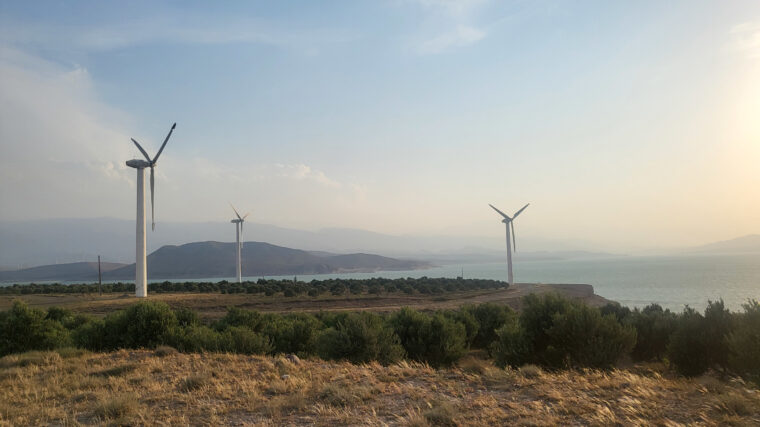Introduction
In modern businesses, the integration of Environmental, Social, and Governance (ESG) factors in project management has become increasingly essential. As organizations strive to adopt more responsible and forward-thinking practices, ESG considerations are now central to project planning and execution. This shift is particularly evident in the renewable energy sector, where the global push for sustainable energy solutions has elevated wind energy as a critical component in stabilizing energy supply.
Recent advancements in the wind energy sector underscore its growing importance (Diesendorf and Elliston, 2018). The Global Wind Report (2024) reveals that the industry achieved unprecedented growth in 2023, with over 100 gigawatts (GW) of new onshore wind capacity and 11 GW of offshore wind capacity commissioned—setting new records in wind energy deployment (Global Wind Energy Council, 2024). However, this rapid expansion also brings to light several challenges that must be addressed to ensure the sustainability of wind power projects.
The research conducted for the master`s thesis by Seyedehsan Mousavizadeh (2024) aims to identify and analyze the environmental, social, and governance issues associated with wind power parks (WPPs) through qualitative research. By exploring these problems and proposing effective mitigation strategies, the study seeks possibilities to enhance the sustainability of WPPs and improve their social acceptance, ultimately contributing to the broader discourse on sustainable project management in the renewable energy sector.
ESG Factors and Sustainable Project Management
Incorporating ESG factors into project management is pivotal for fostering sustainable business practices. ESG factors not only guide companies towards integrating circular economy principles into their core vision, mission, and culture but also drive innovation in sustainable operations and product development.
The environmental aspect of ESG focuses on how a company or industry impacts the environment and ecosystems. This includes assessing the company’s carbon footprint and the sustainability efforts within its supply chain. Social factors emphasize the company’s impact on society, both internally and within the broader community. This includes efforts to improve fairness, diversity, and inclusion in corporate governance, as well as advocating for social good beyond immediate business interests. Governance within the ESG framework refers to how a company’s board and management drive positive changes in corporate governance. This includes addressing issues related to executive pay, workplace diversity, leadership responses to crises, and interactions with shareholders (Napoletano and Curry, 2022).
Sustainable project management entails balancing social, ecological, and economic aspects throughout a project’s life cycle to ensure its deliverables remain beneficial over time (Silvius & Schipper, 2014). This approach requires stakeholder cooperation, life cycle thinking, and balancing the three dimensions of sustainability—social, environmental, and economic (Hübner et al., 2023). Systematically integrating sustainability criteria into project evaluation, production, and processes involves developing decision-making tools and practices. Organizations that prioritize social responsibility often act swiftly, achieving short-term benefits while sustaining long-term efforts (Martens & Carvalho, 2017). Despite these efforts, Klakegg (2009) identifies barriers to achieving sustainability, including conflicts of interest, stakeholder disengagement, low economic returns relative to investments, and evolving conditions. Integrating sustainability into project management is essential, as evidenced by Eid’s (2009) study, which shows the potential for embedding sustainability across all project management process groups (Figure 1).

Corporate Social Responsibility (CSR) further complements sustainability efforts by committing to ethical behavior, economic development, and improving the quality of life for employees and communities. In the evolving landscape of corporate sustainability, the European Union has enacted the Corporate Sustainability Reporting Directive (CSRD) (European Commission, n.d.-a) and the Corporate Sustainability Due Diligence Directive (CSDDD) (European Commission, n.d.-b), which promote responsible corporate behavior and enhance transparency. These directives align with broader sustainability goals, fostering a more transparent and accountable business environment. Additionally, these rules improve risk management, resilience, and competitiveness, making companies more attractive to talent, sustainability-oriented investors, and public procurers. They also encourage innovation and provide better access to finance. In developing countries, the Directive aims to enhance human rights, environmental protection, and sustainable investment, while improving sustainability practices and living conditions for local populations.
As we move toward a greener future, it is crucial to consider how these ESG factors and sustainable project management practices can be applied to the renewable energy sector, particularly in wind energy.
Research Method
The research utilized a qualitative approach to gain comprehensive insights into the problems and best practices related to the integration of ESG factors in WPPs. Five semi-structured interviews were conducted with experienced project managers (three from Finland and two from Iran) in the wind energy sector. These professionals were chosen for their extensive expertise and practical knowledge, providing valuable, real-world perspectives on ESG integration in WPPs.
The primary aim of these interviews was to collect up-to-date information on the issues faced by WPPs and to identify effective strategies for addressing these challenges while enhancing social acceptance. The interviews were guided by a detailed questionnaire comprising nine questions categorized under ESG factors: environmental, social, governance, and economic issues. Table 1 presents the participant information, detailing their roles and experience levels in the wind energy sector.
| Title/Work position | Name | Project management experience in wind energy | Date of the interview |
| Project Consultant | A | >2 | June 2024 |
| Project Manager | B | >2 | June 2024 |
| Project Manager | C | >10 | June 2024 |
| Project Manager | D | >15 | June 2024 |
| Project Consultant | E | >6 | June 2024 |
Results
After analyzing the interview transcripts, the results were organized into three key themes: environmental, social, and governance issues, and best practices for mitigating these challenges.
Key environmental problems included difficulties in recycling turbine materials, negative impacts on soil and water resources, and significant threats to avian life due to collisions and habitat disruption. Noise pollution and shadow flicker were also noted as problematic for both wildlife and nearby residents. To address these issues, the experts recommended comprehensive Environmental Impact Assessments (EIAs) before project initiation, strategic site selection to avoid sensitive areas, and the use of advanced, quieter turbine designs and environmentally friendly materials like wooden towers.
Social challenges centered around the acceptance of WPPs, with concerns about noise, shadow flicker, and visual impacts on the landscape, all of which can affect tourism and community well-being. Ethical concerns related to turbine production and the displacement of agricultural activities were also highlighted. Best practices for mitigating these issues included proactive community engagement, transparent communication, fair compensation for affected landowners and integrating wind farms with existing agricultural activities to minimize displacement. Additionally, measures to reduce noise and shadow flicker, along with educational initiatives to build local awareness and capacity, were recommended.
Governance challenges included unclear legislation, particularly for offshore projects, conflicts between regulatory authorities, and a lack of sustainability monitoring during WPP operations. The experts emphasized the need for clearer regulatory frameworks, improved stakeholder coordination through transparent communication, and better alignment of policies to reduce project delays and enhance efficiency.
Discussion and conclusions
The integration of ESG factors into wind power park (WPP) management presents significant challenges, particularly in terms of social acceptance. Insights from interviews with experienced project managers in the wind energy sector highlight the substantial impact that ESG-related issues have on local communities. The concerns identified, such as the impact on the landscape, avian and bat life, and potential health issues, are critical to the success of WPP projects.
To address these challenges, project managers must prioritize effective stakeholder management. This involves actively engaging with local communities, maintaining transparent communication, and demonstrating a genuine commitment to mitigating environmental and social impacts. By involving stakeholders early in the planning phase and maintaining open dialogue throughout the project’s lifecycle, managers can build trust and increase social acceptance of WPPs.
In conclusion, the success of wind energy projects depends not only on technical or economic considerations but also on the ability to manage ESG factors effectively. By focusing on community engagement and addressing local concerns, project managers can navigate the complexities of ESG integration, ensuring that wind energy projects contribute positively to sustainable development goals.
Looking ahead, future research should explore the execution and controlling stages of WPP development in more detail, focusing on how project managers consider ESG factors during these phases. This study primarily concentrated on the initiation and planning phases, so expanding the scope to include later stages could provide a more comprehensive understanding. Additionally, it would be beneficial to deepen the knowledge of how the new directives will affect project managers’ work and behavior in WPP projects.




